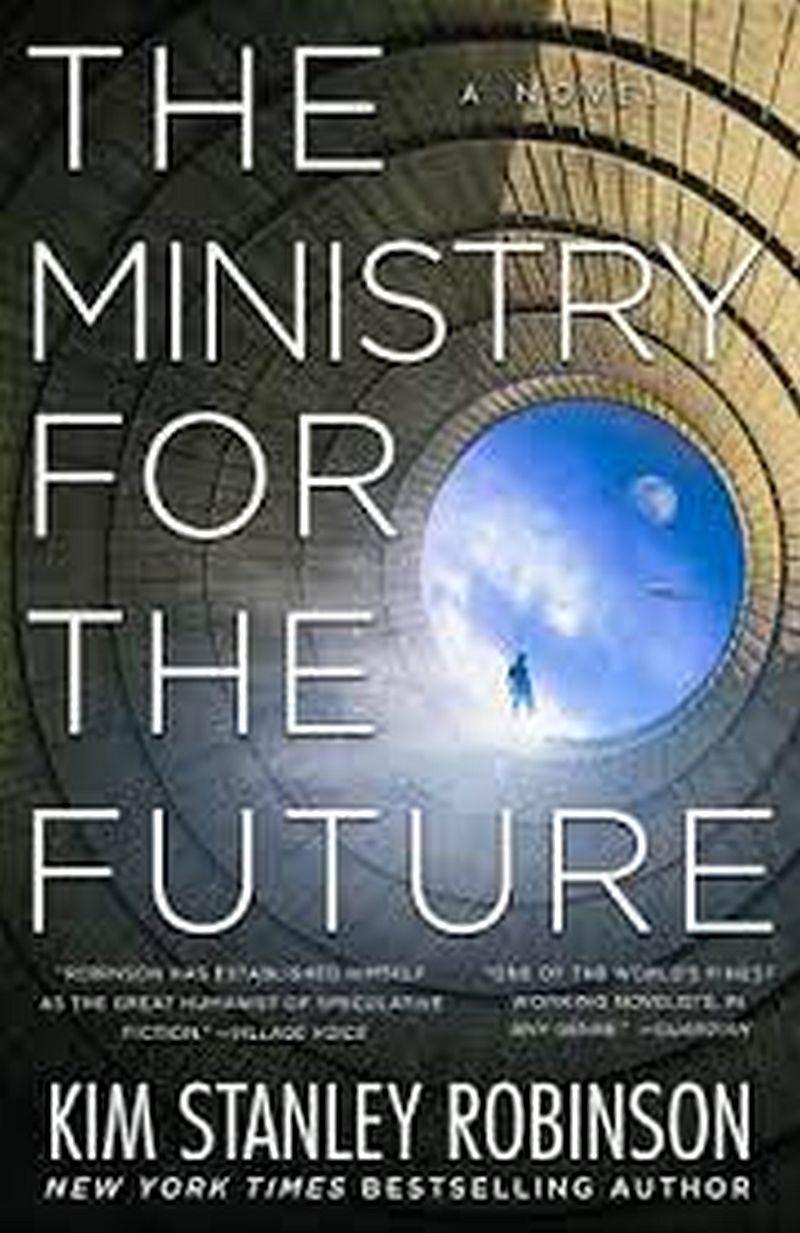Kim Stanley Robinson
Orbit/Hachette Book Group

|
The current rate of extinctions compared to the ecological norm is now several thousandfold faster, making this the sixth great mass extinction event in Earth’s history, and thus the start of the Anthropocene in its clearest demarcation, which is to say, we are in a biosphere catastrophe that will be obvious in the fossil record for as long as the Earth lasts…Evolution itself will of course eventually refill all these emptied ecological niches with new species. The pre-existing plenitude of speciation will be restored in less than twenty million years. from The Ministry for the Future |
The situation is not hopeless. Not yet.
The novel opens with a scene from hell: In 2025, India experiences an unprecedented heat wave (Think of June’s heat dome in the Pacific Northwest, only more intense and protracted.) Twenty million people die within two weeks as their bodies stop sweating and begin baking. In the face of this monumental catastrophe, the nations of the earth… do nothing. Again.
The event becomes like the next horrendous mass shooting in the US, “mourned by all, deplored by all, and then immediately forgotten or superseded by the next one, until they came in a daily drumbeat and became the new normal.”
The Paris Agreement creates the Ministry for the Future, another toothless quasi-UN agency to study the problem and come up with solutions that will never be acted upon. Mary Murphy, Ireland’s former foreign minister, heads up her team of passionate and committed scientists, economists, international lawyers, and statisticians. Through their work, we see the complexity of the challenge and the many competing interests that complicate implementing any solution. (“It was easier to imagine the end of the world than the end of capitalism.”)
The story is told through a variety of viewpoints, including Murphy and the Ministry’s members, a traumatized survivor of the Great Indian Heat Wave, refugees, farmers, terrorists, international bankers, fossil fuel mega-corporations and the politicians they own (Cue Oklahoma Senator Inhofe throwing snowballs in the US Senate as proof that climate warming is a hoax.) “Everyone alive knew that not enough was being done, and everyone kept doing too little.”
Robinson has a wide grasp of technical knowledge, and he identifies solutions currently available: carbon-negative agriculture, clean energy, carbon-based materials created from CO2 sucked out of the air, cheap clean desalination, 3-D printed houses, toilets and sewage systems, landscape restoration, habitat corridors, and ag/habitat combinations; even pumping up water from under Antarctica’s glaciers to refreeze and rebuild the glaciers, preventing their further melting.
If we cannot find the political will to address and correct climate change, perhaps we can find the economic will. The Ministry convinces the world banks to experiment with a new carbon currency. In combination with carbon taxes on companies who burn carbon, it pays them to sequester carbon instead, thereby offering a viable post-oil business future where they can earn more by keeping oil in the ground than pumping, refining and selling it.
There are also destructive actions: Using drones, eco-terrorists crash 60 passenger jets in one day, and the airline industry collapses (“ten percent of the carbon burn, gone in a single day.”). Terrorists also reduce methane emissions by culturing and introducing Mad Cow disease by drone dart into millions of cows around the world.
The problem we learn is not scarcity, but an extreme unequal distribution of wealth and resources. Robinson cites international studies that show there is enough for all—enough food, enough water, could be enough housing to accommodate the world’s population at a Western standard of living equal to $100,000 per year—which would also reduce the world’s population as people become more economically secure.
It becomes clear that there is not one solution, that the climate crisis requires a multitude of approaches. In the weeks leading up to the Glasgow meeting of world leaders on climate change, Robinson’s book reminds us that there are solutions. The situation is not hopeless. Not yet.
This review first appeared in The Columbia River Reader (October 15, 2021.) Reprinted with permission.



